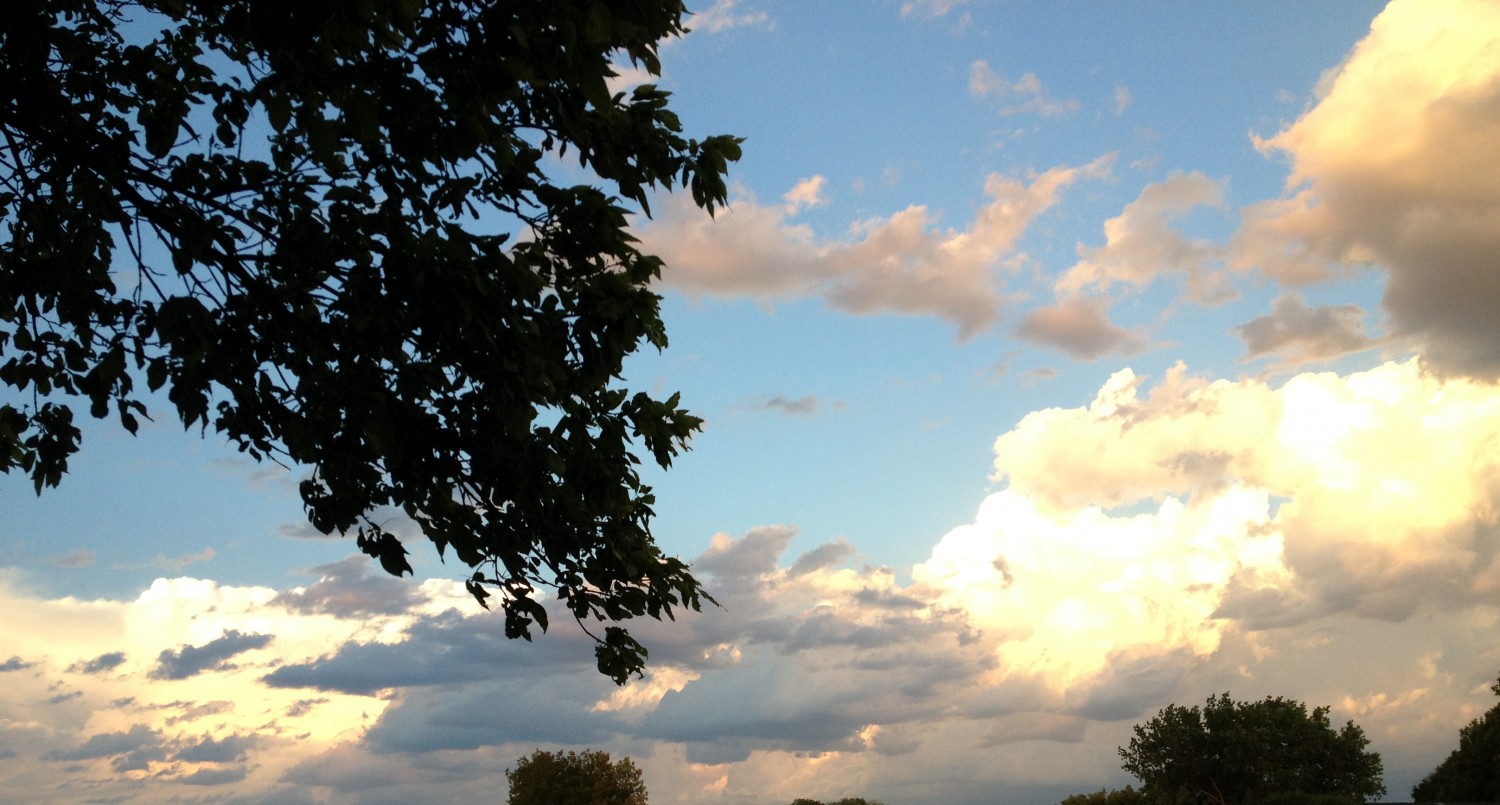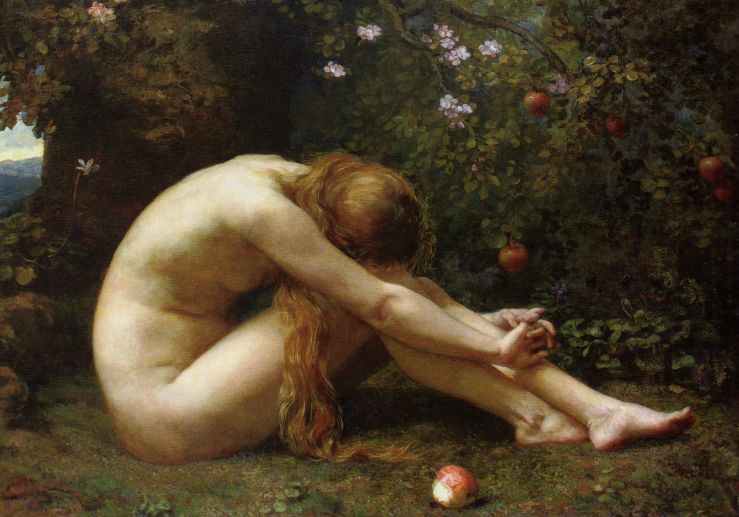Hyper-linking Green Grass Running Water: Pages 41 – 45 (3.3)
Talking Trees: Many different cultures have stories about talking trees. I was reminded of the apple throwing trees in the film adaptation of The Wizard of Oz. I also thought about the Ents in Lord of the Rings. In Greek mythology, trees were considered to be sacred, to the point that they were personified as driads (tree nymphs, fairy-like creatures). Many ancient Greek myths tell of women fleeing the embrace of amorous gods and being transformed into trees as a metamorphic sanctuary. For example, Daphne was pursued by Apollo but managed to maintain her chastity by begging the earth (her mother) to give her refuge. As Goldman notes, trees also have special significance in the Sun Dance ceremony. The tree defines the ritual space of the Sun Dance and is planted in order to be at the centre of the dance. The warrior Kablaya personifies the tree saying “he will be our centre, and will represent the way of the people” (Goldman 34).
That GOD: at the beginning of Green Grass Running Water there is “that Dream.” Then it becomes “that Dog Dream” and finally it decides to be “that GOD” to emphasize his (its) importance (King 2). “That GOD” seems to represent the Christian God. That GOD is bossy and disapproves of the way that First Woman has made the world. Despite his disappointment he claims the garden and all of its contents as His own. He is not a welcome addition to the garden (41). In the biblical story of the creation of the Garden of Eden, God creates man first and puts him in charge of tending the garden (Genesis 2.8). The woman is created as an afterthought. As a companion. The biblical God gives Adam permission to eat from all of the trees except for the Tree of Knowledge of Good and Evil. King seems to mock the Christian God’s refusal to share his food in Green Grass Running Water.
The phrasing of “that GOD” also calls Harry Robinson’s oral storytelling to mind. The use of “that” is contrary to customary English usage. The capitalization of the entire word GOD is a kind of making fun of how God is treated as a proper noun. The capitalization in written English is used to legitimize the Christian God as the one and true God. King mocks the custom and by capitalizing the entire word he renders it as more of a sound. He therefore gives it an oral storytelling type role.
“Sit down,” I says. “Boy, this story is going to take a long time.”: This is King’s narrative voice speaking and expressing that he is fed up with Coyote’s constant interruptions. Once again, King reminds us that even as we are reading a book, it is being told to us by a storyteller who is in a sense speaking to us. The story does indeed take a long time to tell, it spans many years, even going all the way back to creation stories.
Ahdamn:a play on Adam from the biblical creation story. King phoneticizes Adam’s name to have a different meaning. Ah, damn seems more like a casual curse versus Adam which is Hebrew for “man.”
That woman/that good woman/First Woman: once again, the language and phrasing of oral storytelling has symbolic importance. Just as King refers to “that GOD,” he refers to “that woman.” First Woman is therefore linguistically given the same (or more) importance as the Christian God is given. Flick points out that the First Woman is an important personage in Seneca and other tales (147). In the Ojibwa version of the tale, the most powerful spirit in the universe, Kitchi Manitou, asked the First Woman (then the Sky Woman because she lived on the Moon) for help creating humanity. Notably, she is characterized as good. In comparison to the irritatingly loud mouthed that GOD and the relatively useless Ahdamn, First Woman stands in sharp contrast. Here King uses the capitalization for the proper noun of the Christian God but he uses it properly with First Woman.
Ahdamn is busy. He is naming everything.
You are a microwave oven, Ahdamn tells the Elk.
You are a garage sale, Ahdamn tells the Bear.
You are a telephone book, Ahdamn tells the Cedar Tree.
You are a cheeseburger, Ahdamn tells Old Coyote. : This section plays off the biblical story of Genesis 2.19 where God brings Adam the animals that have just been created and lets him name them. Symbolically, God gives Adam quite a lot of power by letting him name the animals. This story is representative of a collaborative relationship between God and his human creations. King mocks the trust that Ahdamn has been given. In Green Grass Running Water it seems as though Ahdamn has given himself the task of naming the animals. And the names he chooses aren’t great. As Stratton says, Ahdamn “is busy colonizing the garden by ‘naming everything'” (92). And certainly, early Canadian colonizers exacted a similar kind of naming on a land that they had no entitlement to. By viewing the somewhat outrageous anectdote of Ahdamn naming an Elk “microwave oven” in juxtaposition with how European settlers descended onto Canada to give places names, the ridiculousness and offensiveness of both situations is made clear. The Cedar Tree becoming a telephone book is another form of colonization where the land itself was disfigured and violated. It is also notable that King grants the names of nature proper noun status with his capitalization. King thereby establishes what is holy. Ahdamn’s disrespectful naming is magnified all the more by this strategic grammatical twist. Once again, to refer to Stratton, “King highlights…the values of imperial culture…a belief in hierarchy, technology, exploitation, mastery over nature, progress, private property” (92).
That’s my garden. That’s my stuff: the Judeo-Christian God of the Old Testament has a sharing problem in Green Grass Running Water. Stratton says “God…is cast in the imperial mode” (92). In King’s version of the story Imperial colonizers = that GOD.
There is that garden. And there is First Woman and Ahdamn. And there are the animals and the plants and all their relations. And there is all that food: This passage is significant when contrasted with the story in Genesis. In the bible, it is very clear that there is difference between God’s creations. There is Adam and his “help meet” and then there are the fowl, the beasts, the cattle, and the trees. In King’s version of the story the language “and all their relations” suggested that everything is related. This is more of a community-minded environment than biblical Eden. Once again, King employs oral-storytelling language to recount his version of a garden creation story.
Mr. Looking Bear: In Northwest West Coastal Native culture, bears are symbols for family and strength. The sometimes fierce, sometimes gentle character of the mother bear means that bears are associated with the family. Perhaps the reference to Mr. Looking Bear is symbolic because Alberta is “looking” for motherhood and Charlie is a potential, albeit undesirable, mate.
grove of Russian olives banked against the coulees: The Russian olive tree is large, spiny, perennial deciduous shrub or small growing tree (Collins). It is usually found in fields and other open areas (like coulees). What makes this reference significant is that the Russian olive tree is native to temperate parts of Asia and southeastern Europe and it “was originally planted in Eurasia as an ornamental tree, and was first cultivated in Germany in 1736” (Collins). In the late 1800s the Russian olive tree was introduced to North America as an ornamental and windbreaking plant. Yet the Russian olive tree has a tendency to spread very quickly and their growth threatens and out-competes native plant growth. Furthermore:
“The displacement of native plant species and critical wildlife habitats has undoubtedly affected native birds and other species. The heavy, dense shade of the Russian olive is also responsible for blocking out sunlight needed for other trees and plants in fields, open woodlands and forest edges. Overall, areas dominated by the Russian olive do not represent a high concentration of wildlife” (Collins).
The mention of the Russian olive trees in this paragraph is therefore a subtle reference to how the land has been affected by colonization. Not only were the First Nations people colonized by imperial nations but those imperial nations brought plants that exacted a similar kind of violent colonization on the land and the way it naturally operates.
Coulees in Southern Alberta were carved out millions of years ago by glacial meltwater. They are valleys or shallow ravines. They are the “native” state of the landscape and the Russian olive trees are the intruders.
Alberta: Alberta’s name is a reference to the province of Alberta. According to Flick, this may be because King is originally from Alberta (144).
“You’re not sleeping with John Wayne, are you?” : John Wayne is an actor famous for his roles in Western movies. Lionel longs to be like John Wayne, his childhood hero. Charlie’s question to Alberta therefore has double meaning. He is asking whether she has betrayed him to sleep with the “Indian” hating cowboy. He is also asking whether she is sleeping with Charlie who is linked to John Wayne. Flick says that Charlie’s love of John Wayne “signals his denial of ‘Indianness'” (147). John Wayne is also a duplicitous character in that in some of his films he played roles sympathetic to First Nations people but he was mostly known for the cowboy who drove the “Indians” out of town.
Buffalo Bill Bursum: Buffalo Bill reminded me of the character from Silence of the Lambs. This correlation suggests that Buffalo Bill Bursum is a questionable sort. However Flick sets me straight in that his namesakes are two men who were similarly cruel to Aboriginal people. Holm O. Bursum was a senator from New Mexico who “proposed the infamous Bursum Bill of 1921, which aimed to divest Pueblos of a large portion of their lands and to give land title and water rights to non-Indians” (148). Buffalo Bill refers to William R Cody who exploited First Nations in his show Buffalo Bill Cody’s Wild West. The name Bill therefore operates to link the two nefarious characters together. From the link, one can assume that Buffalo Bill Bursum wishes to profit off of resources that aren’t his even if it means exploiting First Nations people like Lionel. It also suggests that he gets gratification out of humiliating and stereotyping First Nations people. King has Bursum make generalizations like “you guys get all that free money…all you guys are related…” (King 80).
“nice is nice and Lionel is nice. He just never made it.”: My third grade teacher said one should never use the word “nice” because there are so many superior adjectives. I think this might apply in this context. Nice maybe isn’t the best, most glowing, descriptor.
“Catch the plane to Edmonton”: this statement from Charlie serves to characterize him and symbolically link him with Edmonton. It is likely that Edmonton and Blossom are not so far apart as to justify a flight. Edmonton is famous for the West Edmonton mall. Malls are sites of capitalism therefore they, and Edmonton, are linked with Charlie.
“he’ll be back on the reserve running for council”: Charlie frames this potential future for Lionel as a negative. It is set up as a comparison to Charlie’s assertion that he “made something of [him]self [but] Lionel’s never going to get out…he’ll be back on the reserve running for council” (King 43). Charlie, as a “yuppie lawyer working for a company constructing a nearby dam” sees success as something outside of the reserve (Wyile 119). Charlie sees a return to the ancestors, a return to First Nations culture as regressive and promotes a more financially lucrative (albeit morally impoverished) life.
Blossom: the Albertan town where the novel is set. As Flick says, “the name suggests natural beauty and regeneration” and may be taken as a directive for Alberta to blossom (147-8).
refrigerators organized around hamburger, frozen corn, white bread, french vanilla cookies, and beer: These are all foods of the colonizer. Hamburger meat, corn that is frozen, bread that is high in sugar. None of these foods are particularly natural.
prehistoric vegetables turning to petroleum in plastic sacks: This language recalls the recurring theme of “creation” throughout the novel. Scientists say that petroleum was created when organic materials decomposed under high temperature and pressure.
Rocky III: The third film in the Rocky franchise, the film centres on Rocky Balboa enjoying his riches as world champion. He only fights people who are hand picked by his manager. He fights Clubber Lang and loses his title. No one believes in Rocky anymore and he is a has-been. Luckily, former world champion Apollo Creed comes to Rocky’s rescue and revives his fighting spirit. Rocky has a re-match with Clubber Lang. Spoiler alert: Rocky wins.
cold, polished cotton sheets: Again, Alberta’s preference for “homey” things that are close to the earth is evident in her distaste for cotton sheets. Cotton is also associated with slavery in the United States and therefore emblematic of the colonizer.
Alberta had just gotten beyond sex with both men before derailing the social locomotive on a grassy shoulder of pleasant companionship and periodic intercourse: This sentence recalls the theme of being on the road. It suggests that Alberta does not want to be colonized by a man into the role of wife. Just as the Canadian railroad was a tool of colonialism to colonize the country, Alberta sees social ceremonies as similarly subjugating.
apart from no men in her life, two was the safest number.: Alberta subverts the message that One is the Loneliest Number.To Alberta, who fears the colonization of marriage, two is safe and one is independence.
Men wanted to be married.: Once again, Alberta’s storyline attempts to subvert cultural norms and stereotypes about women. Alberta, contrary to the stereotypical woman, wishes to remain independent and although she wants a baby she would rather raise it alone than be enslaved by the title of wife.
Works Cited
Andrusiak, Jason. “Land Forms Along the Oldman River.” Oldman River, 2000. Web. 21 Mar. 2014.
Collins, Emily. “Russian Olive (Elaeagnus angustifolia L.).” Invasion Biology: Introduced Species Summary Project. Columbia University, 6 Mar. 2002. Web. 20 Mar. 2014.
Flick, Jane. “Reading Notes for Thomas King’s Green Grass, Running Water.” Canadian Literature. 161/162 (Summer/Autumn 1999): 140-172. Web. 19 Mar. 2014.
Goldman, Marlene. “Mapping and Dreaming: Native Resistance in Green Grass Running Water.” Canadian Literature. 161/162 (Summer/Autumn 1999): 18-41. Web. 19 Mar. 2014.
Jim Kindheart. “Wizard of Oz-Vegan Slap!”. Online video clip. Youtube. Youtube, 27 Aug. 2011. Web. 19 Mar. 2014.
“John Wayne.” IMDB. IMDB, 2014. Web. Mar. 21 2014.
King, Thomas. Green Grass Running Water. Toronto: Harper Perennial, 2007. Print.
MovieZya | Movies Information Made Easy. “Rocky III (1982) HD Trailer.” Online video clip. Youtube. YouTube, 18 Mar. 2013. Web. 19 Mar. 2014.
Ozone31912. “One is the Loneliest Number.” Online video clip. Youtube. Youtube, 5 Feb. 2009. Web. 20 Mar. 2014.
Stratton, Florence. Cartographic Lessons Susanna Moodie’s Roughing It in the Bush and Thomas King’s Green Grass, Running Water.” Canadian Literature. 161/162 (Summer/Autumn 1999): 82-102. Print. 19 Mar. 2014.
“The Bear.” Squamish Lil’wat Culural Centre. Squamish Lil’wat Cultural Centre, 2011. Web. 21 Mar. 2014.
“The Creation of Turtle Island.” Native Art in Canada: An Ojibwa Elder’s Art and Stories. 2012. Web. 21 Mar. 2014.
The Holy Bible: King James Version. Ed. Bartleby.com. New York: American Bible Society, 1999. Web. 21 Mar. 2014.
The Zhengjian Book Series Edit. “Unveiling Prehistoric Civilizations: (Part 11) Petroleum and the Theory of Evolution.” PureInsight.org, 2013. Web. 21 Mar. 2014.
“Trees in Mythology.” Ancient Yew Group. Ancient Yew, 2013. Web. 19 Mar. 2014.
Wyile, Herb. “‘Trust Tonto’: Thomas King’s Subversive Fictions and the Politics of Cultural Literacy.” Canadian Literature. 161/162 (Summer/Autumn 1999): 105-124. Web. 19 Mar. 2014.





